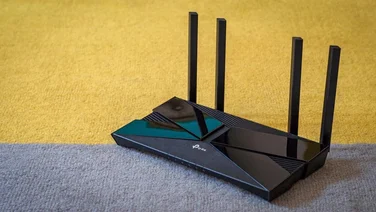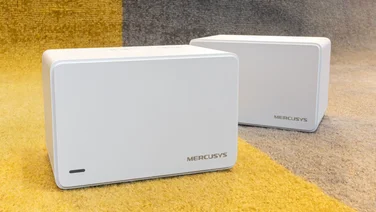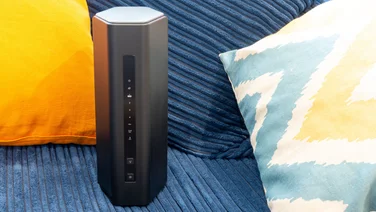To help us provide you with free impartial advice, we may earn a commission if you buy through links on our site. Learn more




Draytek’s Vigor 2850n is the first router we’ve seen which supports the VDSL2 standard, which is needed for high-speed copper connections such as BT Infinity. It also supports ADSL2+, its fourth Gigabit Ethernet port doubles as a WAN port to connect to another modem or router and you can even attach a 3G modem dongle to its USB port to provide a third internet option. You can configure the Vigor 2850n to default to a specific connection method, such as 3G, if one of the other connections goes down.

Even though the Vigor 2850n’s built-in configuration utility has a quick-start menu, this is a router for more experienced users such as IT technicians at commercial premises or home users in need of greater networking flexibility than that provided by their ISP’s router. The Vigor 2850n’s configuration menus are clear, uncluttered and easy to navigate, but they present little in the way of advice or explanation, expecting the user to know what the options mean.
In addition to the four Gigabit Ethernet ports, you can connect to the Vigor 2850n using Wi-Fi. We initially tested it using our Centrino 2 laptop on the 2.4GHz band and achieved data rates of 42.8Mbit/s at a distance of one metre, 34.3Mbit/s at 10 metres and 12.8Mbit/s at 25 metres. These rates aren’t exceptionally fast, but they’re certainly above average. We then switched to the less congested 5GHz band and enabled channel bonding. The rates increased dramatically to 59.9Mbit/s at one metre, 61.5Mbit/s at 10 metres and a remarkable 31.9Mbit/s at 25 metres. The 1m and 10m 5GHz scores are beaten by those of Belkin’s N600 DB (see What’s New, Shopper 290), but its rate of 31.9Mbit/s over 25 metres is the best we’ve ever achieved when using our Centrino 2 laptop’s built-in Wi-Fi.

When we switched off our Centrino laptop’s built-in Wi-Fi adaptor and plugged in DrayTek’s own Vigor N65 Wi-Fi adaptor (£35 from www.dabs.com) we achieved exceptionally good results. We saw 68.1Mbit/s at 1m, 59.9Mbit/s at 10 metres and 8.6Mbit/s at 25 metres on the 2.4GHz band. When we switched to the 5GHz network and enabled channel bonding we achieved the phenomenal rates of 119.8Mbit/s at 1m, 101Mbit/s at 10m and 30.3Mbit/s at 25m. The Vigor N65 Wi-Fi adaptor and the Vigor 2850n combine to produce the best Wi-Fi speeds we’ve ever seen, and is definitely worth the extra money.
Annoyingly, though, the Vigor 2850n can’t transmit on the 2.4GHz and 5GHz bands simultaneously, which puts it at a severe disadvantage in comparison with other high-end routers such as AVM’s Fritz!BOX WLAN 7390 – if you have 2.4GHz-only devices such as many smartphones, you’ll need to do without the super-fast 5GHz mode to get them online. However, it does compensate with other impressive features, such as its web portal option. This lets you redirect users to a specific URL when they first log on to the router. It also has a web content filter, which prevents users accessing specific URLs. Even though the controls reside on the router, letting you block or allow access to certain content for any connected computer, you need to subscribe to DrayTek’s GlobalView service in order to use them. The Vigor 2850n’s firewall is also of note, being extremely customisable, and there are comprehensive bandwidth controls to help you get the most out of your internet connection and control your network traffic effectively.

If you don’t use its USB port for internet access, you can attach a USB flash drive, hard disk or USB printer to the Vigor 2850n to share over the network. DrayTek provides excellent instructions for adding a USB printer to your network, and we quickly configured a colour laser printer for the role. If you attach a USB drive, any connected PCs can use it as network-attached storage. You can even create specific users and grant them specific access rights to the storage. Annoyingly, the Vigor 2850n only recognises drives formatted with a FAT32 or FAT16 filesystem, rather than NTFS.
If you find the options on your present router limiting or if you need a high-quality router with multiple WAN connections should the main internet connection fail, you probably need the Vigor 2850n. It can connect to a variety of different internet sources and is incredibly fast. It isn’t as user-friendly as the AVM Fritz!Box Fon WLAN 7390, but it’s a powerful unit that rightly deserves its Business Buy award.






